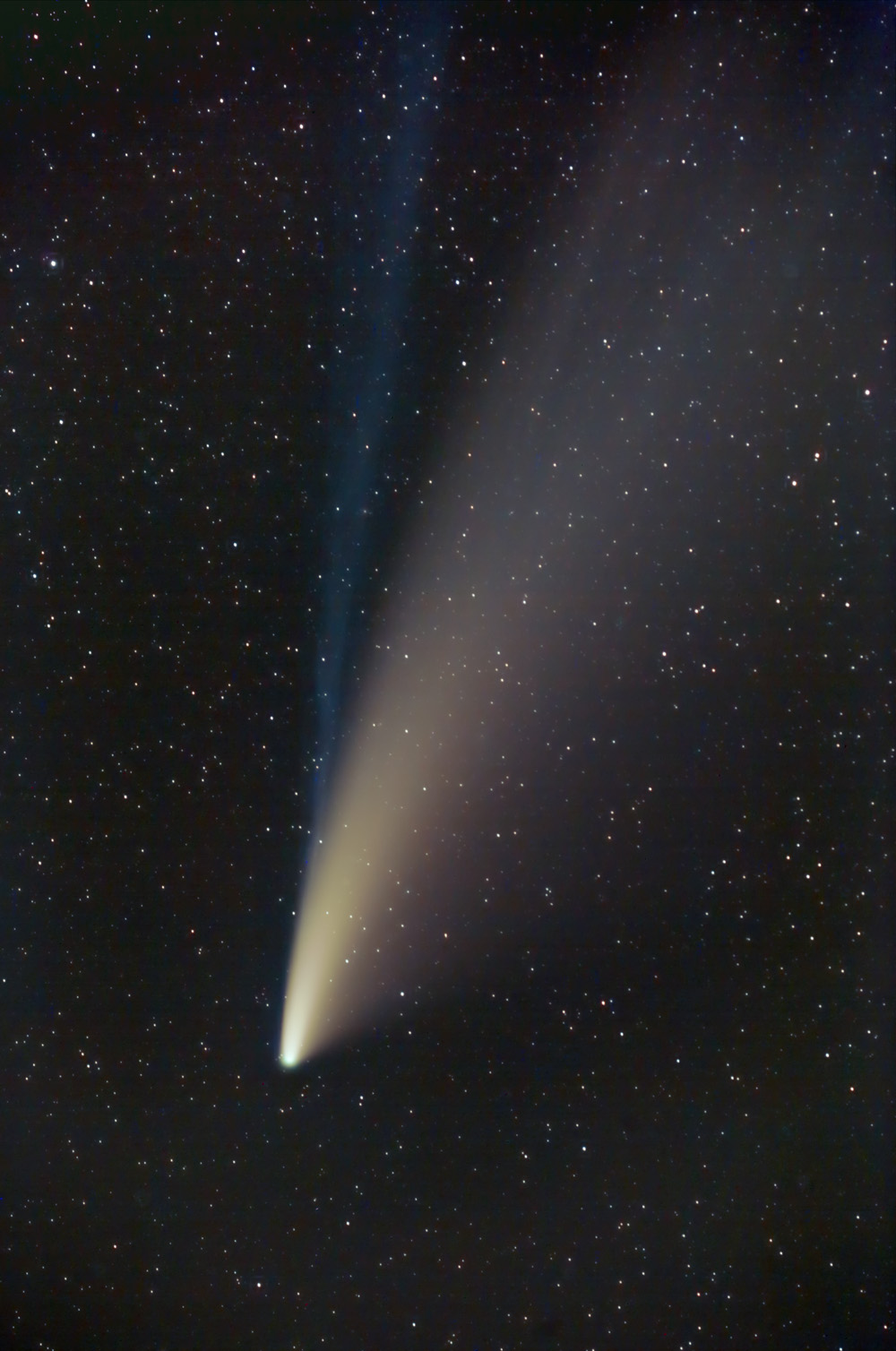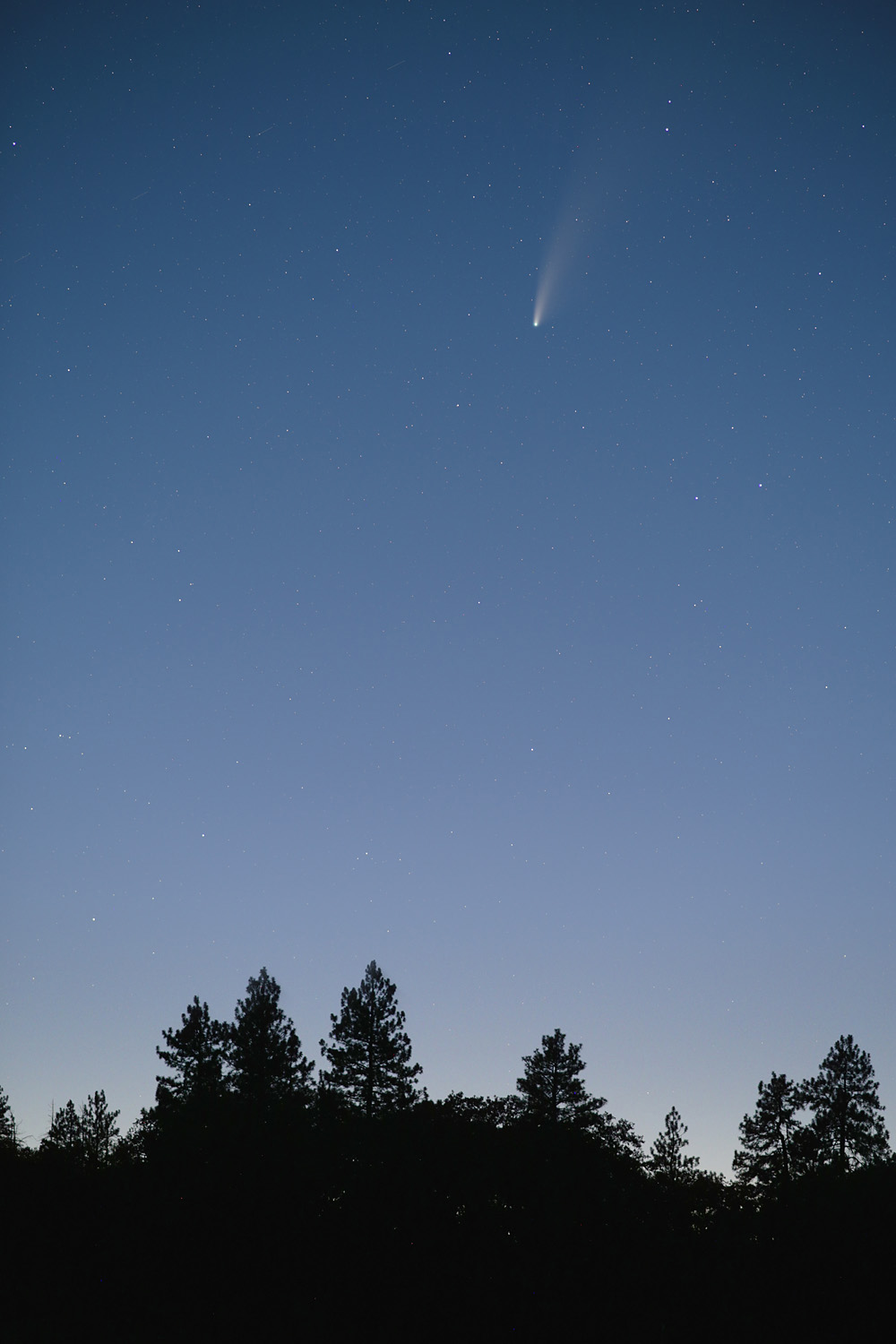It’s very strange, and more than a little sad that my first star party of 2020 was in mid-July! I did some imaging in January, of course, from southern California, but that doesn’t really count. Last weekend I and a record number of other astronomers and imagers met at SkyView Acres in Goldendale, WA. Many of the folks there had already seen and/or photographed comet NEOWISE (C/2020 F3), but it was the first time for me, so I spent some time on it each of the 3 nights there.
In it’s current location, this comet is not a great target: Just after sunset it is reasonably high in the sky, but then the sky is still too bright to show much detail:
As the sky gets darker there is more contrast, but then the comet is very low (close to the horizon), which is never good for photography, and particularly bad at this location because the light bubbles of Portland and Seattle are to the west and northwest. Of the many configurations of focal length (magnification) and time captured, these 2 worked best. The “close up” was captured with the RedCat 51 telescope (250mm focal length) after it got reasonably dark (around 11PM). There was still a lot of reddish glow in the bottom half from light pollution, but this was removed in processing. The “wide field” shot was captured with a 24mm focal length lens around 10PM. Visually, the sky was not quite that bright, but it is true that at this time of year it doesn’t get really dark until well after 11PM around here. I used a Canon 6D camera (full frame DSLR) for both of these. A one-shot-color camera is preferred for comets, since comets move relative to the stars, so using a monochrome camera and filter wheel would result in misalignment of the color planes. For the same reason, processing comet photos is tricky, so it’s best not to further complicate things by shooting the colors separately.
For the wide-field image I shot a large number of frames at ISO 1600 with 4 second exposures, but used only a dozen or so frames for this quick processing. This was on a tracking mount, but because of the short exposures and the small number of frames used, there was not significant motion of the comet relative to the stars, so I didn’t have to do anything to correct it. The trees in the foreground are a different story. They became “blurry” when the frames were stacked because of the motion of the tracking device, so I selected a single frame for the trees and did a “cut & paste” to place this single exposure for the bottom part of the image.
The close-up image took a lot more work. It is still made up of quite short exposures – 6 seconds at ISO 3200. There is no foreground to worry about, but I did have to deal with motion of the comet relative to the stars. Interestingly, it’s easy to deal with this if the time between first and last shots is either very short OR very long. If it’s short there is not enough movement to show up. If it’s very long the stars move enough that there is no overlap in them from one frame to another (you can either pause between exposures or simply throw away the “in between” exposures in processing), so they all disappear through pixel rejection in stacking. My case was, of course, between these 2 extremes, so I had to stack the frames twice; once with the stars aligned and once with the comet head aligned. These were then carefully combined to use the “comet-aligned” pixels for the comet head and tails, and “star-aligned” pixels for everything else.
NEOWISE is the brightest comet we’ve seen for about 25 years, and has very long tails, so fairly low magnification and short exposures are possible. This is also an unusual comet in that there is very little blue or green in the head or dust tail. The ion tail is distinctly blue, but the rest of it is pretty much yellow. Over the coming weeks the comet will move farther away from the Sun, which means that it will be higher in the sky after sunset, but it is also getting farther away from Earth, so smaller and less bright. Even so, it should be a well-above-average comet for a while. Unless it breaks apart!

